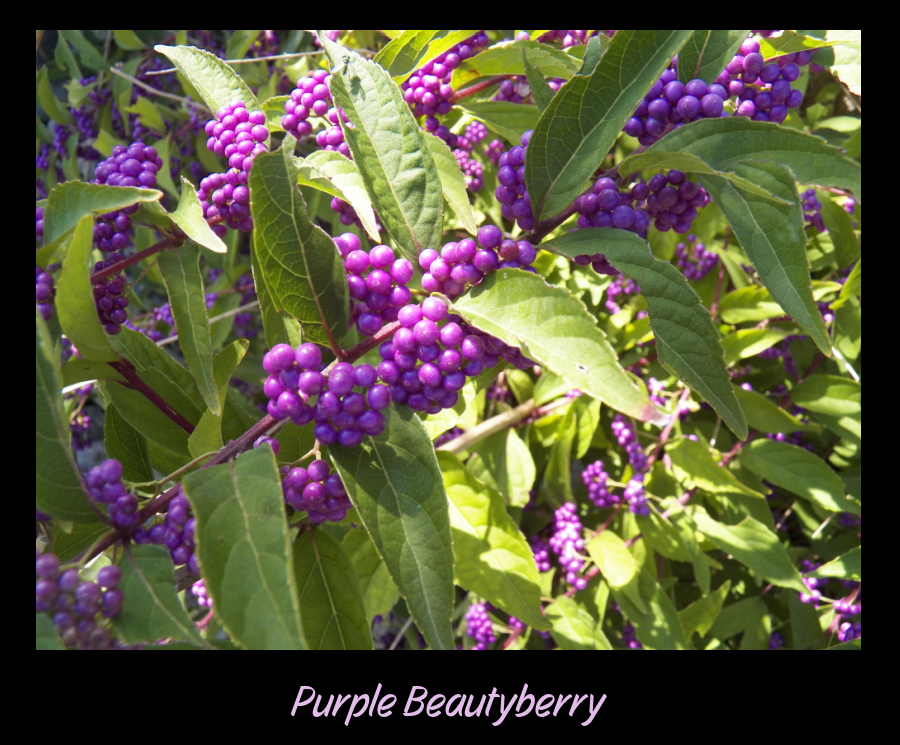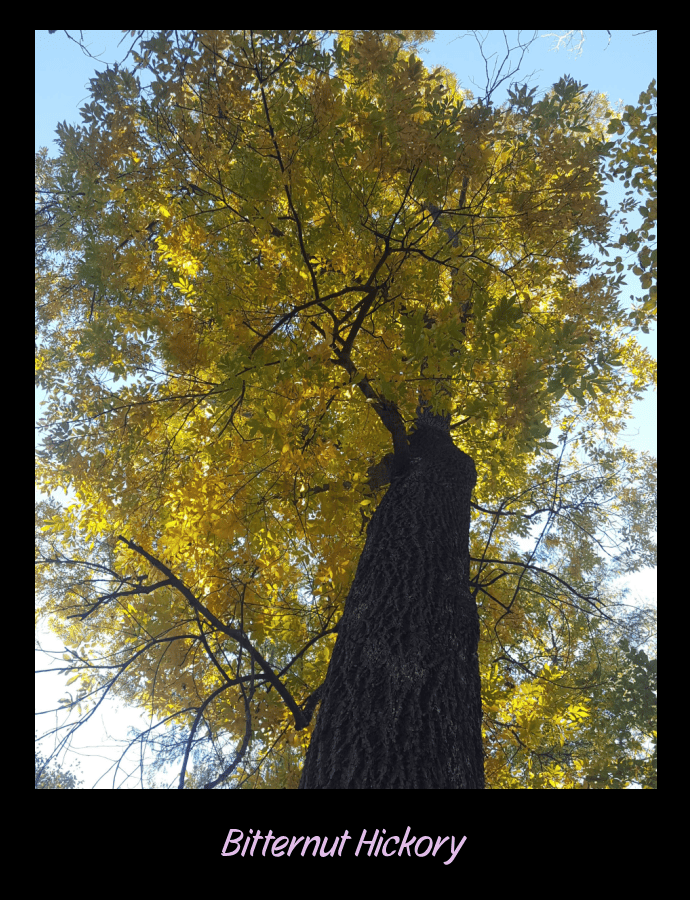When fall finally arrives, it seems as if all the colors in the garden are playing me for a fool. I love the way the garden looks during spring and summer, with the many bright splashes of flower colors and all the greens! But October, wow. It seems as if an entire palette of mixed paints has spilled over into the garden, creating some many different hues and new colors that I cannot even begin to name. The greens are still around, though much subdued, and mainly in the lawn and among the evergreens.
One would think it best to plant every moment of the spring and summer gardening just to create such a symphony of colors in the garden. But alas, we do not. We garden for the moment, little thinking ahead to the future, because we know not if it will come. And there are so many factors which play together to create colors in the garden. If you have too dry of summer, you may not get reds in the oaks. If its too wet, other colors may suffer. Cool nights in August make the mums bloom too early. But many of the choices we make for the garden early in the year, do in fact, help along with October colors in the garden.
Colors in the Garden – Planning Ahead
Just like everyone else, I have favorite plants which in turn, have a variety of colors in the garden, from flowers to fall foliage. And because everyone has their own microclimate within their landscape, everyone has different results with each plant. But in general, the following plants will thrive in locations located in the Central Great Plains Region. I will be looking over a variety of my favorite plants and their colors in the garden.
Purple Colors in the Garden
Purple has long been one of my favorite colors. And not just because I am a lifetime Kansas State fan and 2007 Graduate. I have always associated purple with royalty and kings, just like on the throne. Purple colors in the garden can range from the richest bright purple of beautyberry to the darkest bronzy-purple of Opening Day viburnum. There are tones of plum, mauve, violet, and lavender.
Colors themselves can be in the leaves, flowers, or fruit of October. I have one flower in particular which has been blooming since September and will continue to bloom into November and December. Let me show you my plants.
Viburnum ‘Opening Day’
One of the newest plants in the garden, ‘Opening Day’ viburnum is a type of doublefile viburnum which has baseball-sized flowers, from which the name came from. Besides the June flowers, this viburnum boasts excellent fall color, with dark purple leaves which hold their color for several weeks before falling. ‘Opening Day’ is a Proven Winners selection which grows 6 to 8 feet tall and wide.

Aromatic Aster
One of the longest blooming perennials in my garden, aromatic aster will usually bloom for 12 weeks from September to December, completely ignoring frosts. Indeed, this native perennial not only laughs at frosts and freezes, but it also is one of the most drought tolerant plants I know. Growing 3 feet tall and up to 5 feet wide, this perennial blooms with gusto. Many butterflies, bees, and other late season pollinators relish the blooms.

Beautyberry
This is the plant I think of when I consider royal purple. It is the berries which are the stars of the show on this plant. Glistening in an autumn rain shower or early morning dew, beautyberry berries simply glow. While they do eventually get picked off by birds, they are not a first choice, and will remain on the plant long after the leaves have fallen. Similar to butterfly bush in growth type (cut back in the spring for best berry production); they are long lived plants if treated well. Beautyberry will grow 3 to 5 feet tall and wide and take full to part sun.

Red Colors in the Garden
Reds can be hard to come by during the spring and summer months. Sure, you can get them in the flowers of lobelia, zinnia, and Maltese cross, but there are few others. Therefore, red colors in the garden usually have to wait until fall. But it is worth the wait. Even if you have to wait years for certain trees to show their true colors, it can be worth it. In 2019 we had record-breaking rainfall, nearly double of our yearly average, which resulted in the best red fall color on pin oak which I have ever noticed.
But if you want a more consistent fall coloring of reds, look for the following plants.
Scarlet Oak
While not native to our immediate area, they can be found across the eastern half of the US. Here at Grimm’s Gardens, our founder Doug Grimm, has selected one of his oaks to grow for sale. It is known to us as the KC Infraray Red Scarlet Oak (quite a mouthful right?). Anyways, I always describe the color as fire engine red. And it is. Faster growing than many of the other oaks, scarlet oak has the best red fall color of the oaks. It grows 50 to 70 feet tall by 40 feet wide.

Sugar Maple
Perhaps our best tree (best selling and favorite) is the sugar maple. Hiawatha Kansas is known as the City of Beautiful Maples, a name chosen because of the many sugar maples planted across the city. I love my own sugar maples, and last year (2022) I planted my first ‘Oregon Trail’ sugar maple. Besides our own ‘Oregon Trail’, we have another variety called ‘Fireside’ which is just as red. While it is true that sugar maples can be red, orange, yellow, or a mixture, reds are the best ones. Sugar maples grow 50 to 80 feet tall and 50 feet wide.

Virginia Sweetspire
Preferring a wetter landscape, such as found in many of the Southeastern US states it grows native in, Virginia sweetspire is an excellent shrub for fall color. The reds that are produced in the leaves of this plant. And it takes shearing great! I love finding it in the garden not only because of the fall color, but also the fragrant blooms which attract a wide range of pollinators. Sweetspire, depending on cultivar, can grow 2 to 8 feet tall and forms thickets.

Yellow Colors in the Garden
Many people do not even consider the point yellow makes in the garden. It is bright! I love have a mixture and diverse group of plants in the garden. Do not get me wrong, I love my reds, purples, and oranges, but you need yellow too. It is all the fall colors which make up the autumn garden, not just one.
Ginkgo biloba
One of the most unique trees in the landscape, there are far more scattered around the Central Great Plains than one would imagine. The yellow fall color of the ginkgo is the clearest and best yellow of any tree or plant in the garden. Unfortunately, we get an early freeze 1 out of every 4 years resulting in premature leaf drop before fall color sets in. But the years where the leaves color up are worth the one where it does not. When picking out your ginkgo tree, be sure to get a male selection, as the fruit is very stinky. Ginkgo biloba can grow 4 to 100 feet tall and up to 100 feet wide, depending on variety.

Bitternut Hickory
In my opinion, this is the must underrated and underused shade tree in the Central Great Plains. Growing faster than the other hickories, bitternut has a straight trunk and small nuts which are typically collected by squirrels and birds. The leaves are a shiny, dark green in summer and turn a bright and brilliant yellow (nearly orange) in fall. The tree itself grows 40 to 70 feet tall and 40 feet wide.
Bluestar
Despite its name, bluestar (Amsonia) is a native perennial which has excellent fall foliage. We do not typically think of perennials as having fall colors in the garden, but this one does. Bluestar does have blue flowers in mid-spring which are the main reason for being added to the landscape. But the fall foliage is nice too. Bluestars grow 1 to 5 feet tall and wide in a large clump, depending on cultivar and species.

Orange Color in the Garden
What would October be without orange colors in the garden? Orange is usually found in pumpkins, but there are so many more options available than just the standard pumpkin. Orange might be pumpkin colored, or it might be rust colored, or even bronze. No matter the shade, it is an important color in the garden.
Baldcypress
My second favorite tree, the baldcypress, is one of the rust colored oranges. The soft green needles are similar to an evergreen, but it loses its leaves each autumn. Baldcypress prefers wet swamps of Louisiana and Alabama, but it grows just fine here in our heavy clay soils. It is one of the prettiest trees at any time of the year. It grows 60 to 100 feet tall and 50 feet wide.

Bittersweet
One of the best and wildest vines in the wild, bittersweet yields its color in the pumpkin-orange color of its ripening fruit. The fruit is suspended inside a capsule which opens as the fruit dries and ripens. The vine is tough and bendy, but heavy on a standard trellis. Unfortunately, the plants are separated between male and female, and only the female plants produce fruits. But nurseries have overcome this by planting both together in a single container. The vines can grow 10 to 40 feet long.

Black Chokeberry
One of my favorite shrubs for the border, black chokeberry shines in both spring and fall. In spring, the white-pink flowers are favored by pollinators, while in autumn both the leaves and fruits shine. The fruits are blue-black and hang in great clusters on a mature plant. The leaves turn shades of orange, red, and rusty bronze, making for a brilliant display. Depending on the cultivar, chokeberry grows 1 to 12 feet tall and wide.

Conclusion
Autumn is the time to enjoy the more subdued colors of the garden, especially the oranges, reds, yellows, and purples. It is also a great time to pick and plant new plants in the garden. With sweeps of native grasses, ripening berries, and the last of the fall flowers, one cannot go wrong outside in autumn.
Happy planting!




